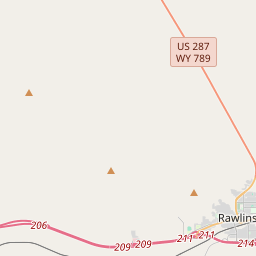Civil War Cannons
Historical marker location:






April 12, 1861: The Civil War begins with the Confederate attack on Fort Sumter, located in South Carolina's Charleston Harbor.
April 15, 1861: President Abraham Lincoln issues a call for 75,000 volunteers to serve in the Union Army to suppress the rebellion.
May 24, 1861: The first major land battle, known as the First Battle of Bull Run (or First Battle of Manassas), takes place in Virginia. It ends in Confederate victory.
September 17, 1862: The Battle of Antietam in Maryland becomes the bloodiest single-day battle in American history, with heavy casualties on both sides. The Union forces, commanded by General George McClellan, manage to halt Confederate General Robert E. Lee's advance into Union territory.
January 1, 1863: President Lincoln issues the Emancipation Proclamation, declaring that all slaves in Confederate-held territories are to be set free. However, the proclamation does not immediately free all slaves in the United States.
July 1-3, 1863: The Battle of Gettysburg in Pennsylvania takes place, resulting in a significant Union victory and inflicting heavy casualties on Confederate forces. It marks a turning point in the war.
November 19, 1863: President Lincoln delivers the Gettysburg Address, emphasizing the principles of liberty, equality, and the preservation of the Union.
April 9, 1865: General Robert E. Lee surrenders to Union General Ulysses S. Grant at Appomattox Court House in Virginia, effectively ending the Civil War.
April 14, 1865: President Lincoln is assassinated by John Wilkes Booth while attending a play at Ford's Theatre in Washington, D.C.
May 10, 1865: Confederate President Jefferson Davis is captured, signaling the collapse of the Confederate government.
December 6, 1865: The Thirteenth Amendment to the United States Constitution is ratified, officially abolishing slavery throughout the country.
While this timeline provides an overview of key events, it is important to note that the Civil War spanned over four years, from 1861 to 1865, and encompassed numerous battles, campaigns, and political developments that shaped the course of American history.
The town of Cody, Wyoming was named after the famous western showman, Buffalo Bill Cody.
In the mid-19th century, the discovery of gold in the Atlantic City-South Pass area brought an influx of prospectors and miners to Carbon County. The county's name itself is derived from the vast coal deposits found in the region, which became a significant economic resource. The Union Pacific Railroad's expansion in the 1860s further spurred development in the county, as it provided a means to transport coal and other resources.
The town of Rawlins, named after Union Pacific Superintendent General John A. Rawlins, became the county seat in 1868. It quickly developed into a center for the region's coal mining industry. Coal production boomed in the late 19th and early 20th centuries, attracting immigrants from various countries to work in the mines. This contributed to the diverse cultural heritage of Carbon County.
In addition to coal, other industries started to develop in Carbon County. Ranching became a vital part of the local economy, as the open plains provided ample grazing land. Additionally, the county's stunning natural landscapes and proximity to outdoor recreational activities, such as hunting and fishing, attracted tourists and outdoor enthusiasts. Today, Carbon County remains an important contributor to the state's energy sector and continues to preserve its unique history and natural resources.
Carbon County Timeline
This timeline provides a condensed summary of the historical journey of Carbon County, Wyoming.
- 1868 - Carbon County was established by the territorial legislature of the Wyoming Territory.
- 1869 - The first white settlement in Carbon County was established at Rawlins Springs.
- 1870 - Rawlins Springs was renamed Rawlins and became the county seat of Carbon County.
- 1870s - Coal mining became a significant industry in Carbon County.
- 1881 - The Union Pacific Railroad reached Carbon County, leading to increased economic growth.
- 1886 - Carbon County experienced a major coal mining disaster, known as the Hanna Mine Explosion, where over 60 miners lost their lives.
- 1890 - The population of Carbon County reached its peak with over 12,000 residents.
- 1930s - The Great Depression greatly impacted the economy of Carbon County, leading to a decline in mining activities.
- 1950s - The construction of Interstate 80 through the county boosted tourism and transportation in Carbon County.
- 1980s - Carbon County faced another economic downturn with a decline in coal mining and oil extraction.
- Present - Carbon County continues to be a significant contributor to Wyoming's energy industry, with ongoing coal and oil production.